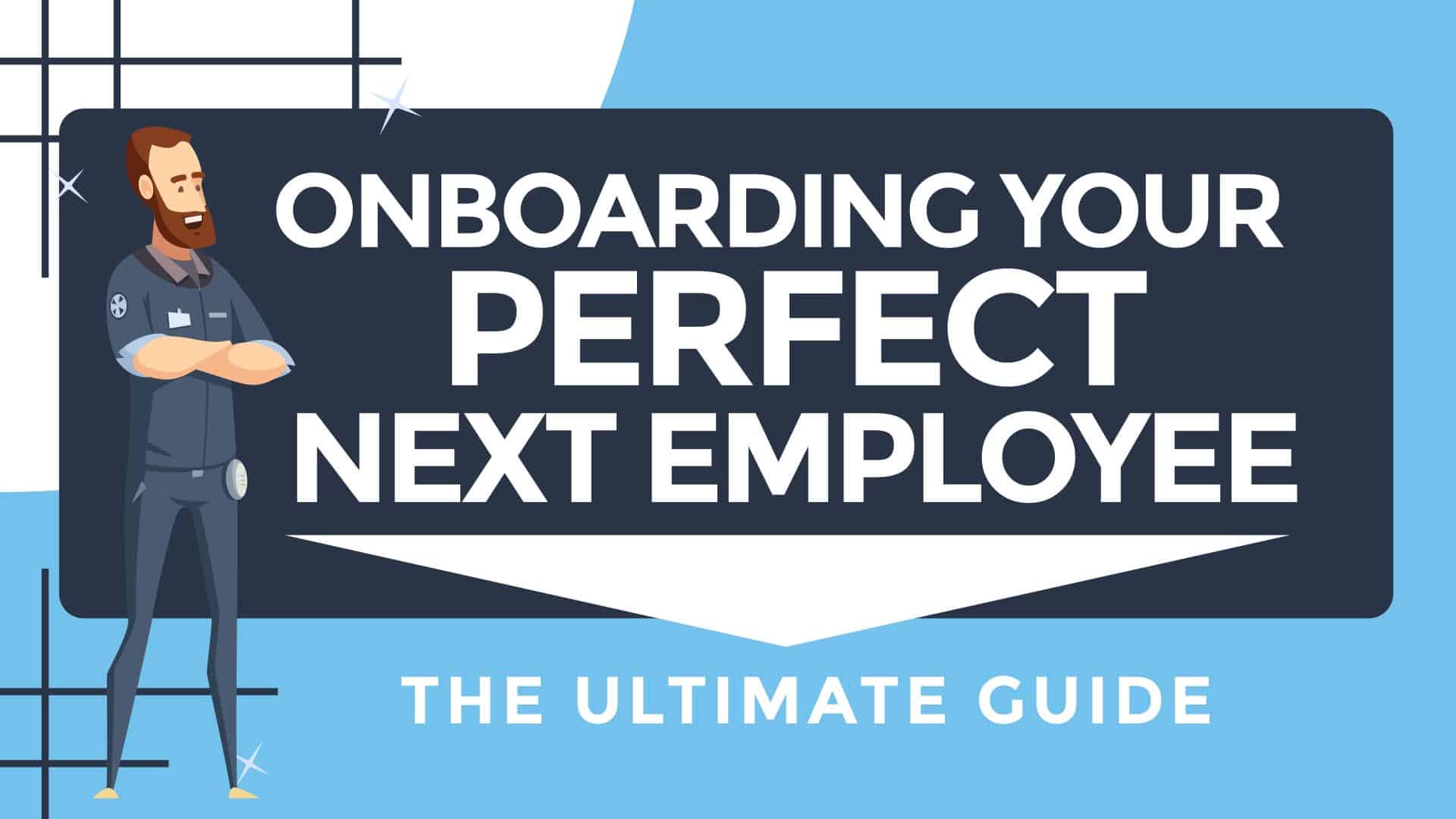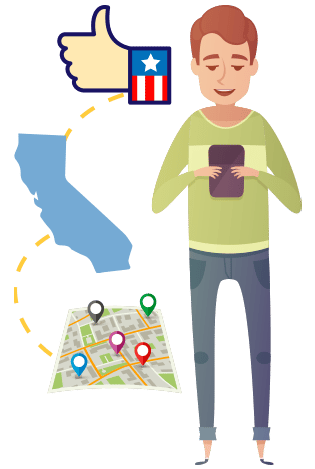The Ultimate Guide to Onboarding Your Next Employee

After hiring, onboarding is one of the most important HR functions. Whether large or small, every organization should bring new employees on in a structured and efficient manner.
Do onboarding well and you dramatically increase the odds that you retain top talent in your organization. You may be surprised to learn that:
- The cost of losing an employee can be twice the employee’s salary or more
- Onboarding has the second highest business impact of all 22 HR practices
- Unhappy and disengaged workers cost the US $483-$605 billion each year
- 44% of CFOs say poor hiring decisions greatly affect morale
The details may vary but the fundamentals of onboarding are the same. Certainly, the goals are the same: streamline and accelerate the process that transitions new hires to fully productive employees making a positive contribution to the team.
Onboarding is for Everyone

Regardless of the employee type or the duration of employment, onboarding is essential. After all, anyone who works for you—even seasonally, part time, or as an intern—represents your company. They affect morale, efficiency, and brand.
In fact, the shorter the likely duration of employment, the more important it is to onboard efficiently and effectively. Onboarding seasonal workers, part-time employees, remote employees and interns is as important as onboarding full-time staff. You can see the value for yourself by watching a short Harvard Business School video featuring three students who talk about their internship onboarding experiences.
The Goldilocks Approach to Onboarding
The best onboarding program finds the right balance between focus on the new hire and productivity of the organization. By organizing and standardizing common tasks, you can make onboarding more efficient for everyone.
Onboarding that is ‘just right’ quickly connects new hires to payroll, gives them the tools they need for the job, and engages them with their workplace and co-workers. Efficient onboarding pays off with higher morale, quicker productivity and a more stable workforce.
Go Beyond Onboarding Checklists
So, what does it mean to onboard well? There are hundreds of articles about onboarding but most focus on the mechanics, providing a laundry list of tasks in a series of checklists that give the illusion that onboarding is a cookie cutter, repeatable process driven by tasks.
Instead, onboarding is a critical process that can affect your corporate culture, productivity and morale. It is about more than just the new hire. You need to do it right. Checklists can help make the process more disciplined and onboarding systems can improve efficiency.
This new hire onboarding guide breaks down the process into several key focus areas to guide your onboarding activities. It also includes some checklists, and strongly recommends you develop your own checklists to increase your odds of success with each candidate.
Focus 1: Make a Good Hire

A good hire will meet the job requirements and fit your culture. Make sure your team evaluates candidate and provides feedback in a way that allows you to have confidence in your selection.
Applicant tracking systems (ATS) can help organize and amplify your hiring efforts. These systems provide templates, workflows, and shortcuts for creating and posting jobs, gathering candidate applications and evaluating interview feedback. They eliminate paper and speed the hiring process while reducing the time and effort for all involved in the hiring process.
Focus 2: Validate Candidate Background and Ability to Work

- Call references. If you haven’t done so yet, check the references provided by your candidate. Use a standardized questionnaire to ensure that you conform to rules and gather feedback in a consistent manner. Or better yet, use an applicant tracking system to automate this step by triggering an email to the references.
- Verify qualifications. If there are absolute requirements like holding a valid driver’s license, make sure you get independent confirmation. This can be part of a background check service.
- Run a background check. The easiest and fastest way to do this is to use a professional service. Make this part of your standard onboarding process to be thorough.
- Check social media. Review top social media platforms to see if there are any red flags to indicate you need further discussion with the candidate.
- Drug test. Many organizations require drug testing prior to employment because of potential workplace liability. Use a professional service to conduct this independent testing.
Applicant tracking and onboarding systems can streamline this essential process through checklists and automation.
Focus 3: Leverage Federal, State, Local Incentives and Programs

Work Opportunity Tax Credit
The federal Work Opportunity Tax Credit (WOTC) program is designed to give companies incentives for hiring certain target groups as a way to reduce unemployment. WOTC targeted groups include certain recipients of TANF, veterans, disabled veterans and felons.
To start the process, be sure to have the candidate fill out the relevant forms on or before the offer date. You will also have to file all paperwork within the first 28 days.
WOTC Forms include:
- Form 8850 – Pre-Screening Notice and Certification Request for the Work Opportunity Credit
- Form 9061 – Individual Characteristic Form for Work Opportunity Tax Credit
Your tax credit can be in the thousands per qualified employee, so filling out the paperwork is certainly worth the effort. Be sure to include it in your onboarding process. You will also need to track hours worked, as there is a minimum for eligibility and an escalation to a maximum.
Don’t leave money on the table. Ask all your candidates to fill out form 8850. If the forms handling process is too burdensome for you, look for an outsourcer like Efficient Hire. They can manage the entire filing, tracking and reporting process for you for a percentage of your credit. You only pay if you receive the credit.
Other Federal, State and Local Hiring Incentive Programs
There may also be other federal, state and local programs that provide incentives for hiring. Make sure you are well aware and include them in your onboarding efforts up front. Examples include state point of hire credits, federal Indian credit, and the Georgia job tax credit.
Focus 4: Payroll and Benefits Readiness (between Offer and Hire Dates)

It is in everyone’s interest to get payroll set up ahead of the start date. Be sure to consult legal counsel regarding any compliance issue created by onboarding activities performed off-the-clock prior to report date.
Common forms and details that new hires complete include:
- Federal W4 Form
- Federal I9 Form
- State withholding forms
- Direct deposit details and authorization
- Emergency contact
On the hiring side, payroll details include:
- Employee details including social security number
- Job assignment
- Department
- Employee ID
- Offer Date
- Hire Date
For example, applicant tracking software can help you make the transition to onboarding by collecting and storing important candidate information such as name and contact information. Fully-integrated applicant tracking can deliver this information to your onboarding system so that you don’t have to re-enter or track this information separately. It may seem trivial, but it is helpful, saves time, and provides a chain of custody (so to speak) of information on your candidate all the way back to the receipt of their resume.
Time tracking is a critical element of payroll readiness. Timekeeping systems make it easy to track employee work hours, design schedules, accrue time off and manage requests, approve time cards, job cost and more. With all the compliance issues related to workforce management, modern timekeeping makes sense for every organization.
Add your new hire to your timekeeping system, with a schedule beginning on the report date. Your new hire will then be able to clock in at the beginning of their first day on the job. The data from your timekeeping system can then feed into the payroll system for payment of wages earned in the first pay period.
Remote Data Gathering
Your goal should be to have new hires complete all payroll and benefits related forms prior to reporting for work on Day 1. Make this something that the new hire can complete remotely. Let them work from their own device and at their own pace. This makes it more convenient for everyone, and more likely that the new hire has access to the right documentation to fill out the various forms.
Your candidate should be able to log into an employee portal and see a list of documents that need to be completed prior to their first day. It helps to provide a checklist, so they can track their progress. Checklists also provide you with alerts and reporting that help you measure the onboarding process and see where follow-up needs to occur. Checklists can also save time when onboarding multiple new employees at once.
Mobile access can make this process much more efficient. Allow documents to be electronically signed and look for onboarding that tracks engagement. Allowing new employees to use their mobile device also comes in handy when you need them to take a photo of their driver’s license (for example) and upload for your records. Questionnaires can help you measure comprehension and helps establish a basis for performance reviews and even formal reprimand.
Benefits Selection
Some benefits are immediately available while others become available after time on the job. Share as much information as you can early on and consider having the new hire to fill out forms ahead of eligibility, if practical. This may accelerate the enrollment process once the new hire is eligible.
Benefit forms may include:
- Healthcare enrollment
- Life insurance
- Health savings account
- Retirement plans
- Disability insurance
- FLSA
Focus 5: Workspace Readiness, Space Allocation and Technology Provisioning (before Day 1)

- Phone extension
- Email address
- Computer
- Network connection
- Software and apps passwords
- Furniture
- Paper, pens, and other office supplies
If your new hire works in a shared space, you may need:
- Locker/storage
- Network connection
- Uniform
- Pen, paper, and other supplies
The goal here is to have the work environment ready day one so the employee can start contributing immediately, whatever their job.
Using an employee onboarding system can help streamline these activities by assigning each task to the individual responsible. Adding reminders will ensure that nothing slips through the cracks.
Day One Planning to Ensure a Good Experience for All
Make a list of everything that should happen on day one. Think about day one from the perspective of the new hire, hiring manager, and co-workers. This is the beginning of a successful onboarding program.
- Logistics
- Parking
- Lunchroom
- Bathroom
- Timeclocks
- Supply room
- Door entry
- Safety
- Fire alarms
- Fire extinguishers
- Workplace hazards
- Emergency exits
- Introductions
- Team introductions
- Email/collaboration tool introductions
Every workplace is different. Build the right list for your organization with the goal of smooth introduction to the workplace. Make it a knock-out day one!
Focus 6: Compliance and Alignment (between Offer and End of First Week, Ongoing)

Every new hire should receive a copy of the employee handbook and any other policies and procedures not included in the handbook and relevant to their job.
- Employee handbook
- PTO policy
- Sick leave policy
- Expense reimbursement policy
- Bonus plan
- At-will employee contract
Make sure your new hire understands formal protocol for things like legal representation, press representation, authorizations, approvals, chain of command and other organizational authority.
Get them familiar with emergency protocol, too; fire escape plans, emergency plans, etc.
An employee onboarding system can automatically attach items listed above as a standard to all new employees, which can easily be accessed via the employee portal at any time.
Focus 7: Engagement and Fit

Beyond the initial flurry of activity lie two related and very serious success factors—engagement and fit. New hires need to integrate into the organization—to become part of the whole and contribute their unique value without subordinating their individuality.
You can foster initial engagement by activities such as:
- Introducing the new hire to immediate co-workers
- Notifying all employees and welcoming the new hire via email or portal
- Inviting the new hire to company social events like lunch-and-learn and birthday celebrations
- Give new hires an option to provide some personal tidbits like hobbies, associations, and favorite cartoon character to stimulate conversation
- Assign the new hire a clear, short-term project to focus energy and demonstrate competence
Mentoring and Shadowing Programs
Another way to foster early engagement is through mentoring for new hires. Mentoring programs can be highly effective in connecting new hires to their jobs and co-workers. They can also provide a sense of long-term opportunity for growth. Similarly, shadowing programs can be helpful in learning jobs on-the-go, which can be very effective in retail, restaurant, repair, manufacturing and other environments.
Just be careful not to go overboard on mentoring. New hires need a sense of autonomy and contribution, and current employees need to feel that they are on track to achieve their own objectives. If you offer a mentoring program, be sure to establish boundaries, set goals, and evaluate effectiveness for both mentor and mentored.
Shadowing is a short-term program. Mentoring, however, can be continued over much longer time periods. If you choose to keep it going, make sure you establish goals for both mentor and mentored and revisit on a regular basis.
Performance Reviews
Performance reviews should be regular and two-directional across the course of the first year of employment. These reviews help the hiring manager, HR and the new hire measure the new hire’s achievements as well as identify areas of improvement for everyone involved. They can be as simple as a checklist for discussion or more formal.
Frequency for performance reviews varies by job and industry but commonly starts with day 1 and week 1, followed by monthly and eventually moves to annually. These reviews are an opportunity to build rapport and adjust the onboarding process to suit individual needs. Set an expectation that new hires are encouraged and even expected to gallop out of the gate.
Organizational Fit and Cultural Fit
Fit is a key factor in long-term success for both you and the new hire. This factor should be considered long before onboarding. One of the very first steps of the hiring process has to be a clear understanding of organizational need that is translated into a job description.
Most employers have budgeting and requisitioning processes that help ensure that there is a true organizational need for the new hire. Well written job descriptions and a good screening and interview process help ensure that the new hire is an organizational fit. Put that work in during the hiring process and you have a much better chance that the new hire fits in. Take the organizational fit into consideration during the onboarding process as well to help the new hire understand clearly their role in the overall success of the company.
Cultural fit can be more difficult and nuanced. Introduce the culture early and often, and don’t expect a new hire to be a change agent. This rarely works and usually ends badly.
Keep the Good. Lose the Bad.
Work hard to keep your good hires as part of the organization. The cost to replace and the loss of momentum is steep.
Bad hires, though, are best lost early. Identify mistakes early. If you make an error in hiring, correct it early. Keeping an employee who is not a fit causes bigger problems. Some companies incorporate a quit now bonus into the onboarding process as a check against bad hiring decisions. If all else fails, fire fast!
Simplify HR management today.
Simplify HR management today.
How Improving Candidate Engagement Influences the Hiring Process
Applicants invest considerable time, effort, and thought into their job applications. Regrettably, it’s all too common for employers to delay responses, with some failing to provide any follow-up whatsoever. Such practices can have a negative effect on the candidate experience, influencing your organization’s hiring efficiency and reputation. Ensuring a positive experience for candidates is crucial…
Read More9 Best Receipt Apps for Small Businesses and Freelancers in 2024
As a business owner or freelancer, you’re spinning many plates at once. You’re keeping up with payroll, making pitches, nurturing your email marketing funnel, and much more. All to maintain and grow your business. The last thing you need is to panic each month as you look for receipts at expense report time. Administrative work…
Read More




